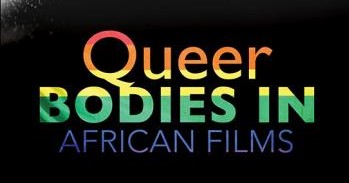Queer Bodies in African Films: Q&A with Dr Gibson Ncube

By Gibson Ncube
Dr Gibson Ncube is Lecturer in French at the University of Stellenbosch, South Africa. In 2021, he was a research fellow with the University of Leeds under the LUCAS/LAHRI visiting fellowship scheme. Until recently, he was co-convener of the Queer African Studies Association. We asked him a couple of questions about his recently published book, Queer Bodies in African Films.
How has this book come about?
I've had an interest in the representation of African queer bodies in film and literature for some time, especially in how such representations can move beyond a victimisation of queer bodies. Somehow, this interest has developed in a book!
The initial idea of this book was conceived at a manuscript development workshop facilitated by the African Humanities Association in Abuja (Nigeria) in 2019. The greater part of this book was developed and written during residences at the Stellenbosch Institute of Advanced Study (STIAS) and the National Humanities Center (USA) within the framework of the Iso Lomso Fellowship scheme. I was also able to benefit from some journal special issues which allowed me to develop ideas which I present in this book. These included “The Possibilities and Intimacies of Queer African Screen Cultures” in the Journal of African Cultural Studies edited by Lindsey Green-Simms and Z’étoile Imma as well as “Sites in Contestation: Reading Contemporary Popular Culture in Africa” in English in Africa, edited by Nedine Moonsamy and Corrine Sandwith. In a way, this book would not have seen the light of day had it not been for the assistance and support of many individuals and institutions.
What is the key argument that your book develops?
The main argument which I make in Queer Bodies in African Films is that queer bodies projected in films from Africa are texts. They have a language, and they can speak. If, indeed, queer bodies are inscribed with a linguistic code, then they can be read. Queer bodies projected on film screens are inscribed with narratives and discourses that speak about and speak to their shifting subjectivities, the multiple truths they cocoon, their complex corporeality, their sensuality and eroticism, and indeed, their very materiality.
What innovative or critical contribution does the book make to African Studies?
I make two critical interventions in this book. First, I centre the body as a site of understanding queerness. I consider the filmed queer body to be invested with multiple and often intersecting discourses and narratives. It is inscribed with more than just desire, eroticism, and sexuality. It is as a disruptive figure whose materiality calls for a rethinking not just of how gender and sexual identities are performed and staged but also how they are constructed and embodied. My reading of queer bodies looks at how the skin and other body parts function in staging and materialising queer lived experiences. I think through how the touching of bodies and rubbing together of physical bodies produce feelings and affection and forge (dis)connections.
The second intervention that I make in Queer Bodies in African Films is to examine the (dis)continuities in the manner in which queer bodies are represented on either side of the Sahara. African Studies is a bifurcated field that is separated by the Sahara. Studies that focus on North Africa often tend to focus exclusively on that part of the continent and the same can be said about studies on sub-Saharan Africa. I undertake a pan-African reading of films from different parts of the continent to highlight, not just the differences in how they represent queer bodies, but also the shared experiences that go beyond regional specificities.
Give us one quote from the book that you believe will make us go and read it?
When queer African bodies are evoked, especially by scholars in the Global North, it is to highlight their precarious condition. In fact, when queer African bodies are examined, it is often to show how queer is impossible in Africa.
